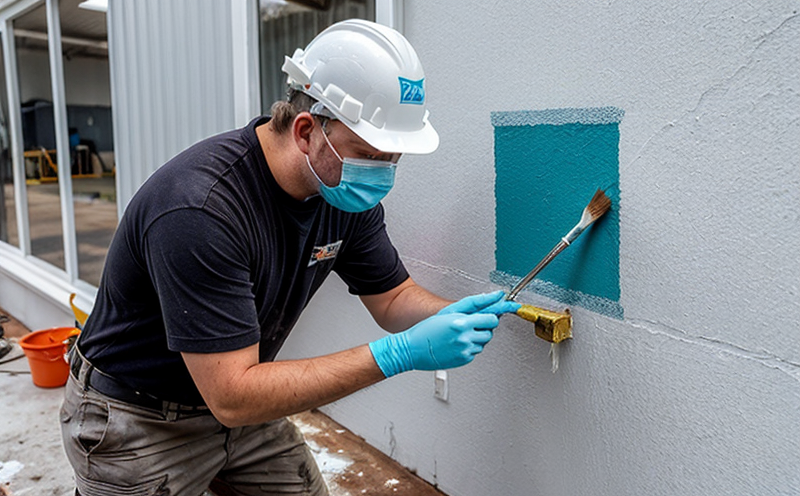Intumescent paint inspection
In fire safety and protection systems, intumescent materials play a critical role in providing passive fire protection. Intumescent paints are designed to swell or expand when exposed to heat, forming a protective layer that helps contain flames and reduce the spread of fire. The integrity of these materials is essential for ensuring effective fire resistance.
Our laboratory specializes in inspecting intumescent paint samples to confirm their compliance with industry standards such as ISO 16925 and ASTM E84. This inspection process involves several key steps, including the preparation of test specimens, exposure to controlled heat conditions, and evaluation of the expanded layer's thickness and uniformity.
The primary goal of this inspection is to ensure that intumescent paints meet stringent fire safety requirements, which are critical for protecting buildings and infrastructure. These materials are often used in areas where rapid and effective fire protection is essential, such as in industrial facilities, commercial buildings, and public spaces. By adhering to rigorous testing protocols, we help our clients maintain compliance with local regulations while enhancing the overall safety of their structures.
Our team employs advanced instrumentation and techniques to assess the performance of intumescent paints under simulated fire conditions. This includes using calorimeters and heat flux meters to measure thermal properties and ensuring that the expanded layers meet specified thickness requirements as outlined in relevant standards.
In addition to physical testing, we also conduct visual inspections to assess the quality and consistency of the paint's appearance before and after expansion. This helps identify any potential issues with formulation or application that could impact performance during a real fire event.
- Calorimetric analysis for heat absorption
- Thermal imaging to monitor temperature distribution
- Visual inspection of expanded layers post-test
Why It Matters
The importance of intumescent paint inspections cannot be overstated, especially in sectors where fire safety is paramount. By ensuring that these materials meet the necessary standards, we contribute to safer environments for people and property.
In industrial settings, where equipment and processes are highly valuable, even small fires can lead to significant downtime and costly repairs. In commercial buildings, the potential damage from a fire could include loss of life, injury, and extensive structural damage. Public spaces like schools, hospitals, and transportation hubs require robust fire protection measures to safeguard those who use them daily.
Compliance with international standards such as ISO 16925 and ASTM E84 not only ensures that intumescent paints perform effectively but also protects manufacturers from legal liabilities. Failure to meet these requirements can result in product recalls, costly lawsuits, and reputational damage.
In addition to safety concerns, there are economic benefits associated with proper fire protection. Insurance companies often provide premium discounts for properties equipped with proven fire resistance systems. Conversely, fires that could have been prevented by compliant materials may lead to higher insurance premiums or even non-renewal of policies.
Industry Applications
The applications for intumescent paint inspections span multiple industries, each with its unique challenges and requirements. In the construction industry, these materials are commonly used in structural components such as beams, columns, and walls to enhance fire resistance.
In the automotive sector, intumescent paints serve a dual purpose: they protect critical engine parts from overheating due to fires while also providing passive fire protection within vehicles. This helps prevent catastrophic failures during accidents or other emergencies.
The aerospace industry relies heavily on fire-resistant materials for both internal and external aircraft components. Intumescent paints are especially useful in preventing fires that could spread rapidly through fuel lines or engine compartments. In the context of maritime safety, these materials help protect ships from the dangers posed by engine room fires.
Quality and Reliability Assurance
- Calorimetric Analysis: Measures heat absorption during exposure to fire, ensuring that the paint can effectively dissipate heat.
- Thermal Imaging: Provides real-time temperature distribution data, helping to identify areas of non-uniform expansion.
- Visual Inspection: Evaluates the quality and consistency of the expanded layer post-test, ensuring uniformity across the sample.





